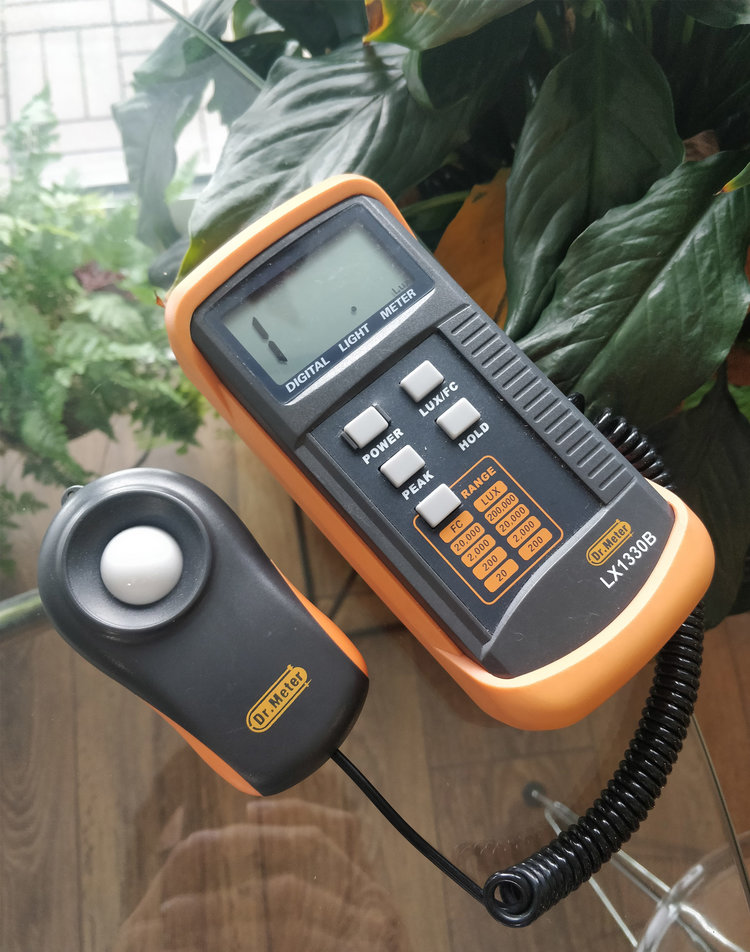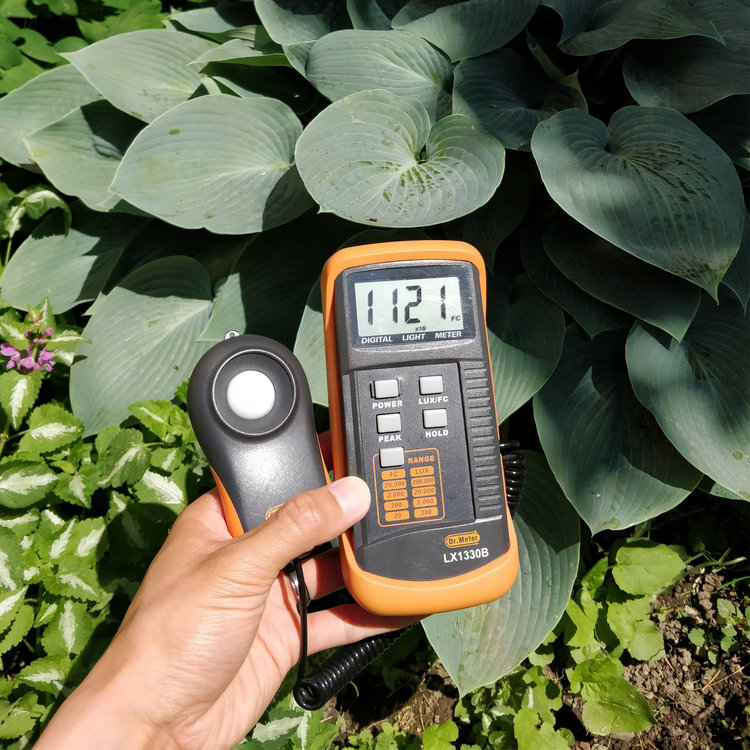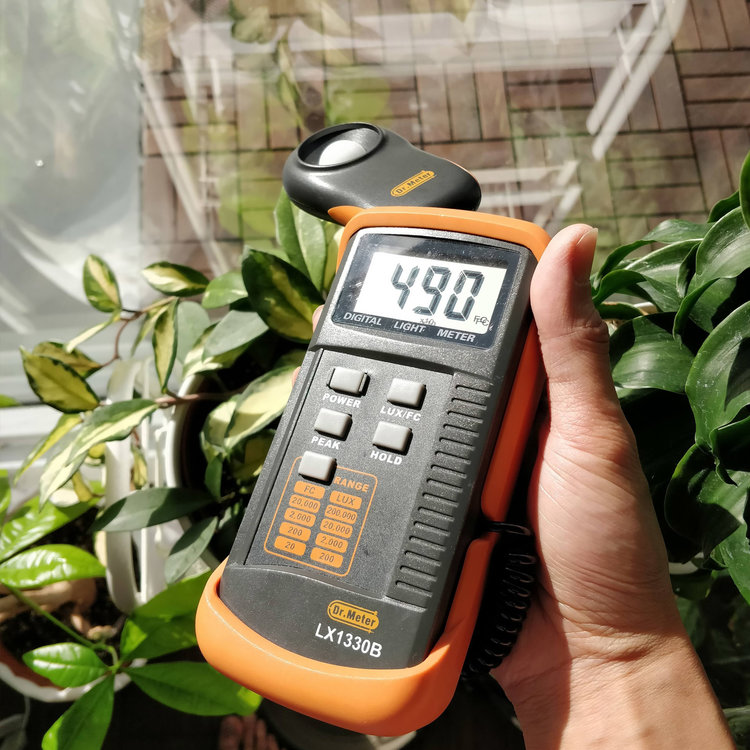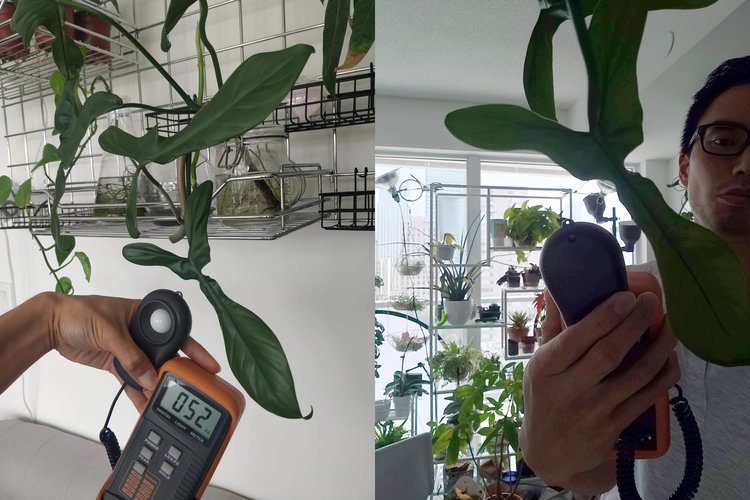The other day, I posted a question on my Instagarm stories: “How can I help you understand light today?”
Hundreds of questions came in so I decided I’ll make several blog posts on the subject based on the common themes I gathered from the questions.
One thing I will say is this: the fact that you all have so many questions about light tells me that you’re all smart people, capable of logical reasoning – and that the current ways in which light has been described as they relate to houseplant care are overly simplistic, vague, and unhelpful.
This will be an ongoing series with the goal of helping you get an understanding of light that makes sense in helping you with houseplant care.
Let me start by saying that I’m going to deal exclusively with houseplants that require “bright indirect light” – the reason being, if a plant needed “full sun”, like a cactus, you can easily understand that this plant needs to see the sun, completely unobstructed, for as many hours of the day as possible. The term “full sun” does not cause any confusion. We will get to defining “bright indirect light” next time but for now, let’s get acquainted with the light meter…
If you’d like to follow along, buying from this affiliate link supports my work in bringing you clarity in houseplant care.

Press ‘POWER’ – now the light meter is on
- If it’s daytime, you’ll probably see “1_._” on the screen and “Lux” at the bottom right corner
- This means the current light intensity is way out of range for your current settings
Change the units to foot-candles (I’ll explain later) – press the “LUX/FC” button
- Now the bottom right of the screen should read “FC”
Change the range – press the “RANGE” button
- See how the decimal place moves to the right
- Keep pressing until you see “x10” on the bottom of the screen – the intensity reading will be ten times the number that appears on the screen (e.g. 453 x 10 = 4530 foot-candles)
How bright is direct sun?

Direct sun outside in a garden:
- Measuring direct afternoon sun in a backyard on some bedding plants
- Completely clear sky
- Buildings and trees nearby but not currently blocking the sun
Reading: 11,210 foot-candles

Direct sun through a window:
- Measuring direct afternoon sun through the window of my balcony
- Some clouds in the sky but the entire sun is unobstructed
Reading: 4900 foot-candles
So the intensity of direct sun ranges from 4000 and up beyond 10,000 – but if we’re dealing exclusively with houseplants, let’s just say this: indoors, behind a glass, WHEN THE SUN SHINES DIRECTLY on the plant, the intensity is 4000 to 6000 foot-candles. The duration is however long the sun remains in view.
Now what happens when the sun is obstructed? While in the garden, I moved slightly into the shade and got this:

Indirect light outside:
- Shaded by a tree
- Measured at the same time as the previous outdoor measurement
Reading: 660 foot-candles
Here’s where you need to consider #whatmyplantsees – when I flip the camera around: the plant would be looking at this…

Now we’ll measure indirect light indoors (but also considering the measurement angle)

Indirect light indoors with varying angles of measurement:
- Measured earlier in the day when the sun had not yet come into view
Readings: 379 foot-candles pointed straight up; 831 foot-candles pointed out towards the sky
As a rough guideline, the 400-800 foot-candle range is achieved when the plant has a large view of the sky but NO DIRECT LINE OF SIGHT with the sun. It’s closer to 400 with less VISIBLE AREA of the sky. It’s closer to 800 with more VISIBLE AREA. Also, the parts of the sky that are closer to the sun will be brighter than the parts farther away.
What happens if we’re several feet away from a window?
When the sun isn’t shining directly into the room, the ambient brightness of the outdoors produces 50-ish foot-candles for most of the day. This is very weak light – but don’t worry about this plant, there’s a grow light that I turn on every night right above it.

Concluding remarks for this blog post:
- There’s a huge difference in light intensity the moment you have a direct line of sight with the sun – around 10 times difference (this is referred to as “an order of magnitude” difference).
- There’s a significant difference in light intensity depending on the total visible area of the sky – this is why I’m constantly saying “let your plant see as much of the sky as possible” – I’m trying to maximize the intensity of the indirect light.
With all these differences, that’s why it’s so important to be specific about exactly what your plant is seeing: duration of unobstructed sun AND total visible area of sky (and other surfaces that reflect the sun).
For next time: if you let your plant see “as much of the sky as possible”, the sun may also come into view for some duration. Does this still count as “bright indirect light?”
There are so many more nuances I’d love to get into but for now, leave me a comment/email on anything else that confuses you about light for your houseplants.
If you got the light meter, feel free to email me any questions you might have when using it: darryl @ houseplantjournal dot com
Almost forgot: 1 foot-candle = 10.7639 lux. The reason I use foot-candles instead of lux is because the numbers in foot-candles are, in my opinion, more manageable – in the range of 0 to 10,000 instead of dealing with klux (thousand lux). And for another blog post – why I’m not using PAR…